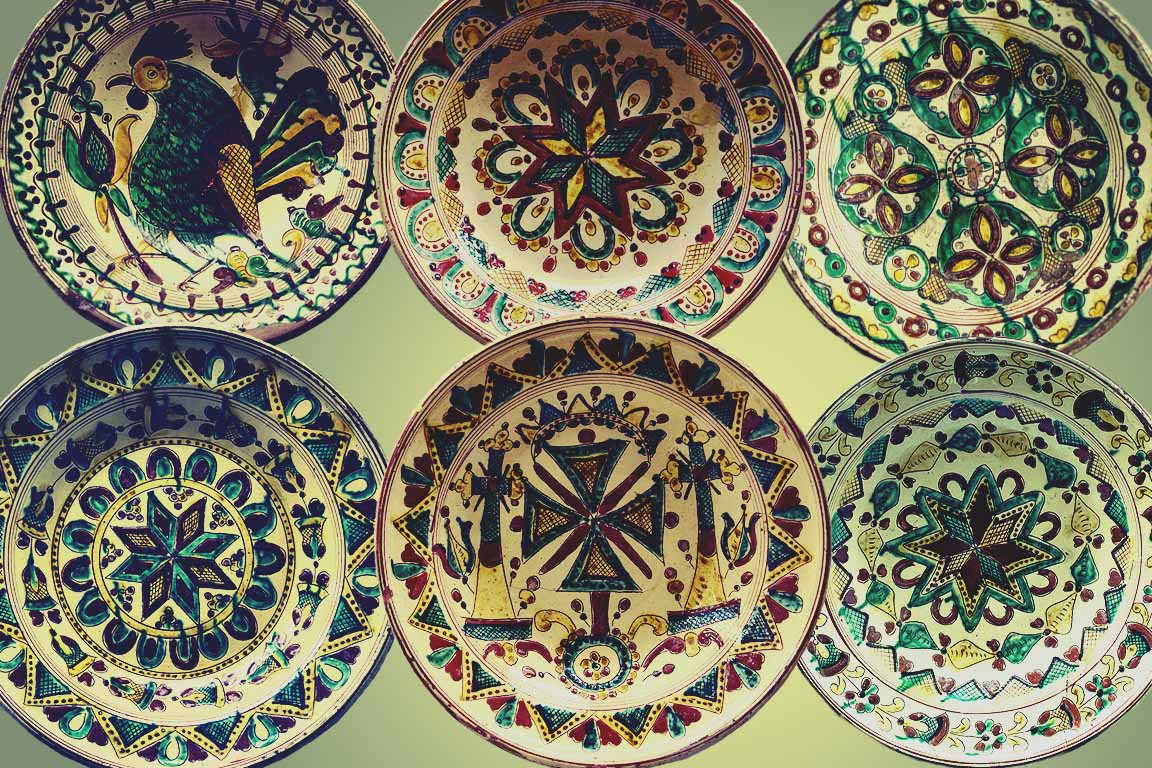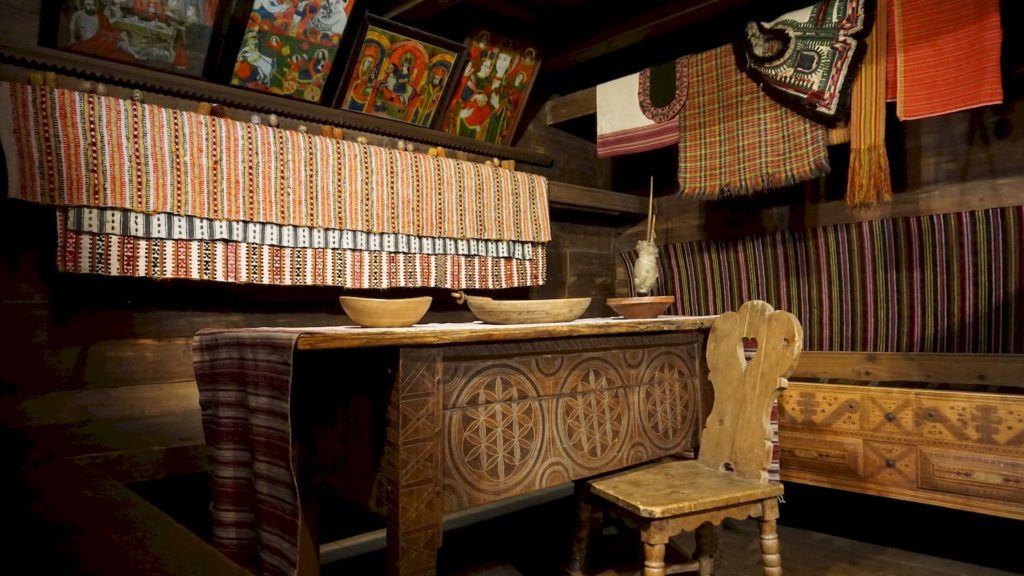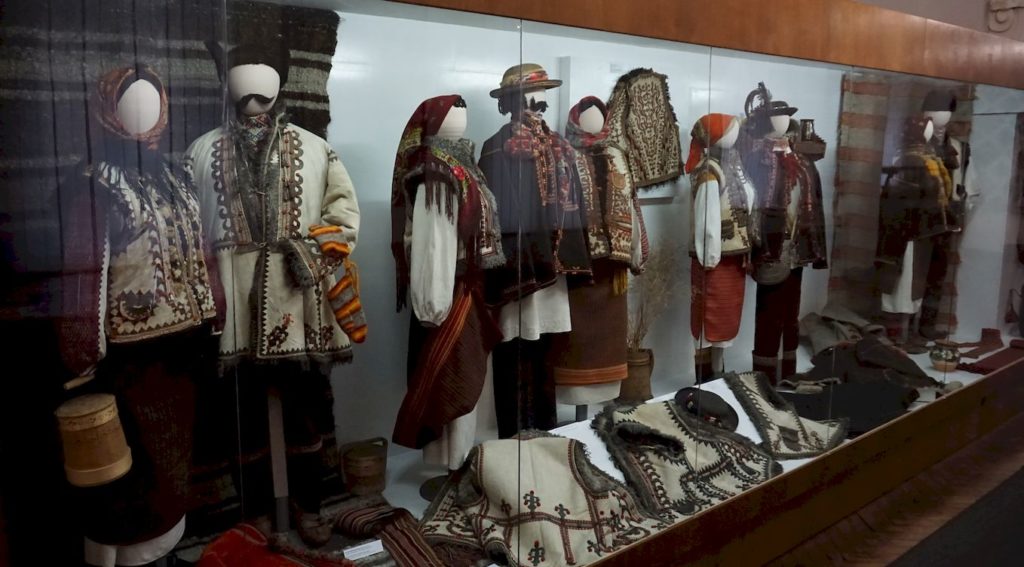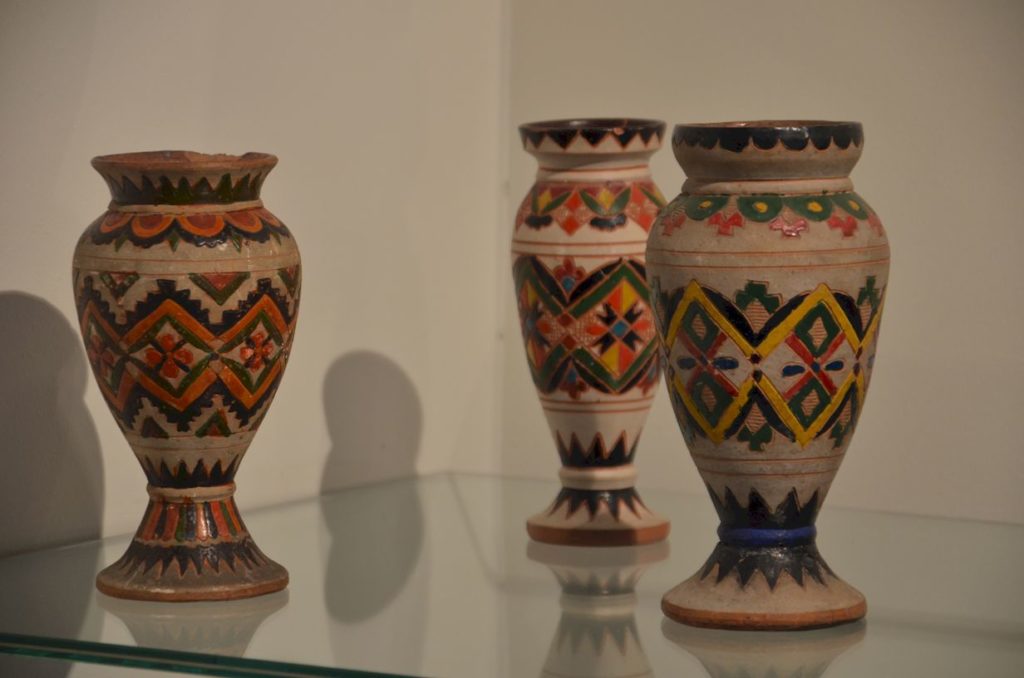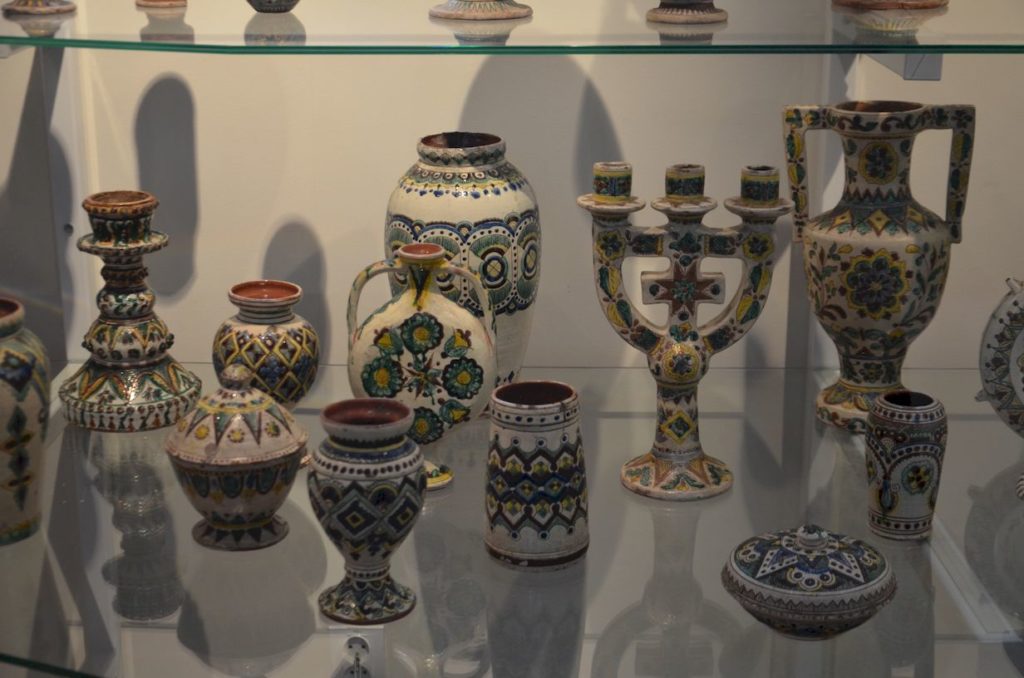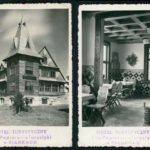Hutsul culture is art and handicraft; ceramics, woodcarving products, wonderful fabrics: kilims, napkins, lizhnycks, embroidered sweatshirts, shirts, scarves and metal products: buckles, crosses and cross necklaces.You can see them all in museums, but you can also observe them on a daily basis. Due to the fact that Hutsul art is still alive and it does not want stay only in open-air museums.
Hutsul region is a place in the western part of Ukraine, in the area of the Eastern Carpathians, including Czarnohora range. Geographically, Hutsul region reaches west to the Boykos settlement area (the seat of the Hutsuls and Boykos were formerly delimited by a vast mountain forest called the Black-Forest) and the Łomnica River (right tributary of the Dniester river). Hutsuls, Ruthenian and Wallachian highlanders, originators of the original regional culture in the Upper Prut basin come from here.
The first information about the population of the Eastern Carpathians can be found in New Athens (1756) by Benedykt Chmielowski and in the work of Balthazar Hacquet, Frenchman, professor of natural history at the University of Lviv, published in Nuremberg (1794). In the first half of the 19th century, there was an increase in interest in the Hutsul region among the Galician elites. Karol Milewski in the Polish Library in 1821 . He published a text about Hutsuls. Many authors wrote about Hutsuls and Hutsul region, including Wincenty Pol, who in the middle of the 19th century travelled through the Eastern Carpathians for several years. During his trips, Oskar Kolberg also visited Red Ruthenia. The first volume of his work Pokucie. The ethnographic image, published in 1882, contains a description of Pokucie (Pokuttya) and culture of its residents. In subsequent volumes, he published songs of Pokucie, dance descriptions, and short stories and devilry.
Polish artistic fascination with the Hutsul region exploded in the first half of the 19th century. The writer Eugeniusz Brocki recorded this region in his short story Opryszki w Karpatach (Poznań, 1836). Józef Korzeniowski wrote the hutsul drama called Karpaccy Górale. Other Polish artists dealing with this topic were, among others famous painters Józef Simmler, Artur Grottger, Juliusz Kossak, Stanisław Dębicki, Józef Jaroszyński, Tadeusz Rybkowski, Wacław Szymanowski (Umizgi huculskie 1892, Kłótnia Hucułów 1889, Huculi w rozmowie about 1886–1900), and primarily, Teodor Axentowicz in his works Pogrzeb Huculski (1882), Święto Jordanu (1893) and Kołomyjka (1895). The Hutsul region was especially adored by three painters from the Krakow Academy of Fine Arts: Kazimierz Sichulski, Władysław Jarocki and Fryderyk Pautsch. Stanisław Vincenz, a Polish prose writer and essayist, was a great lover and expert on Hutsul region.
 But it is the best to see the real Hutsul art in the Museum of Hutsul region and Pokuttya, in Kolomyia. The first exhibition in this city, recognised as the first Polish ethnographic exhibition, took place in 1880. Oskar Kolberg, the ethnographer, folklorist and composer contributed significantly to the arrangement of the exhibition.
But it is the best to see the real Hutsul art in the Museum of Hutsul region and Pokuttya, in Kolomyia. The first exhibition in this city, recognised as the first Polish ethnographic exhibition, took place in 1880. Oskar Kolberg, the ethnographer, folklorist and composer contributed significantly to the arrangement of the exhibition.
At present, the museum’s collections contain nearly 50,000 items of folk art. It is visited annually by about 200 000 tourists from over 50 countries of the world. The exhibits are presented in sections: wood, ceramics, metal, leather, textiles, clothing, folk embroidery, icons, painting. There are almost 4000 of wood exhibits presenting the entire wealth of this kind of art and everyday objects in the Hutsul region and Pokuttya. There, we can also see different kinds of furniture from old cottages: coffee tables, tables, cradles, multifunctional chests, including the chests, connected with the trousseau. Plates, barrels and kegs, bowls, spoons were mostly finely decorated, fired, incrusted with other types of wood, metal or nacre.
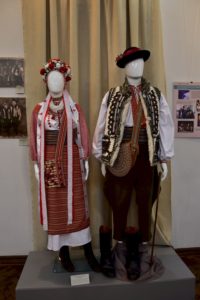
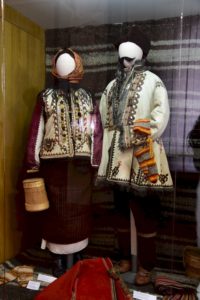 However, a folk costume that has developed under the influence of Wallachian pastoral culture is the sight for sore eyes. You can find there many features common to the ethnic groups of the Carpathian arc. Men’s outfit consists of: a hat, shirt, Hutsul vest, jerkin, footwear (bast shoes). A woman’s outfit consists of: headgear (so called peremitka, raństuch (kinds of headscarf), embroidered shirt (in Polish: soroczka), wool aprons (in Polish: zapaski), homespun skirts (called opinki), narrow belts (krajki), socks, footwear (bast shoes) and decorative jewellery.
However, a folk costume that has developed under the influence of Wallachian pastoral culture is the sight for sore eyes. You can find there many features common to the ethnic groups of the Carpathian arc. Men’s outfit consists of: a hat, shirt, Hutsul vest, jerkin, footwear (bast shoes). A woman’s outfit consists of: headgear (so called peremitka, raństuch (kinds of headscarf), embroidered shirt (in Polish: soroczka), wool aprons (in Polish: zapaski), homespun skirts (called opinki), narrow belts (krajki), socks, footwear (bast shoes) and decorative jewellery.

 The largest collection of Hutsul ceramics in Poland is in the Historical Museum in Sanok. This term is used to describe artistic pottery decorated with semi-majolica techniques, made by the people of Pokuttya – Hutsul region. The main centres for the manufacturing of this ceramics were Kuty, Pistyń, Kosów and Kołomyja.
The largest collection of Hutsul ceramics in Poland is in the Historical Museum in Sanok. This term is used to describe artistic pottery decorated with semi-majolica techniques, made by the people of Pokuttya – Hutsul region. The main centres for the manufacturing of this ceramics were Kuty, Pistyń, Kosów and Kołomyja.
Polish potters that came to the Hutsul region in the first half of the 19th century from Galicia, initiated the manufacturing of ceramics using this technique, the one of such pioneers was an ancestor of Stanisław Kryciński. The basic colours in this style are green, black, ochre yellow, brick, brown and blue. The majority of motifs are floral, geometric, zoomorphic and anthropomorphic. The main elements are garlands, flowers, leaves, triangles and pyramids. The animal world is represented by birds and deer against the forest background, but also by soldiers, hunters, elements of sacred architecture and figures of saints. In the forms of Pokuttyan products, vases, jugs with cracked bulges and oblong shapes prevail the most often. The plates, plates, cake stands, jugs and cups represent the so-called Kolomia approach and refer to the motifs of Greek and Tyrol art. Products of a sophisticated and original form are also candlesticks, figurines and small ceramics for everyday use, i.e. caskets, plates, carafes, etc. Among the bigger-seized forms, tiled stoves decorated with semi-majolica technique deserve special attention.
Polish artists are considered to be the creators of the classical Pokuttyan style: Aleksander Bachmiński, Tomasz and Petronela of Napp family and Sowicki family.




